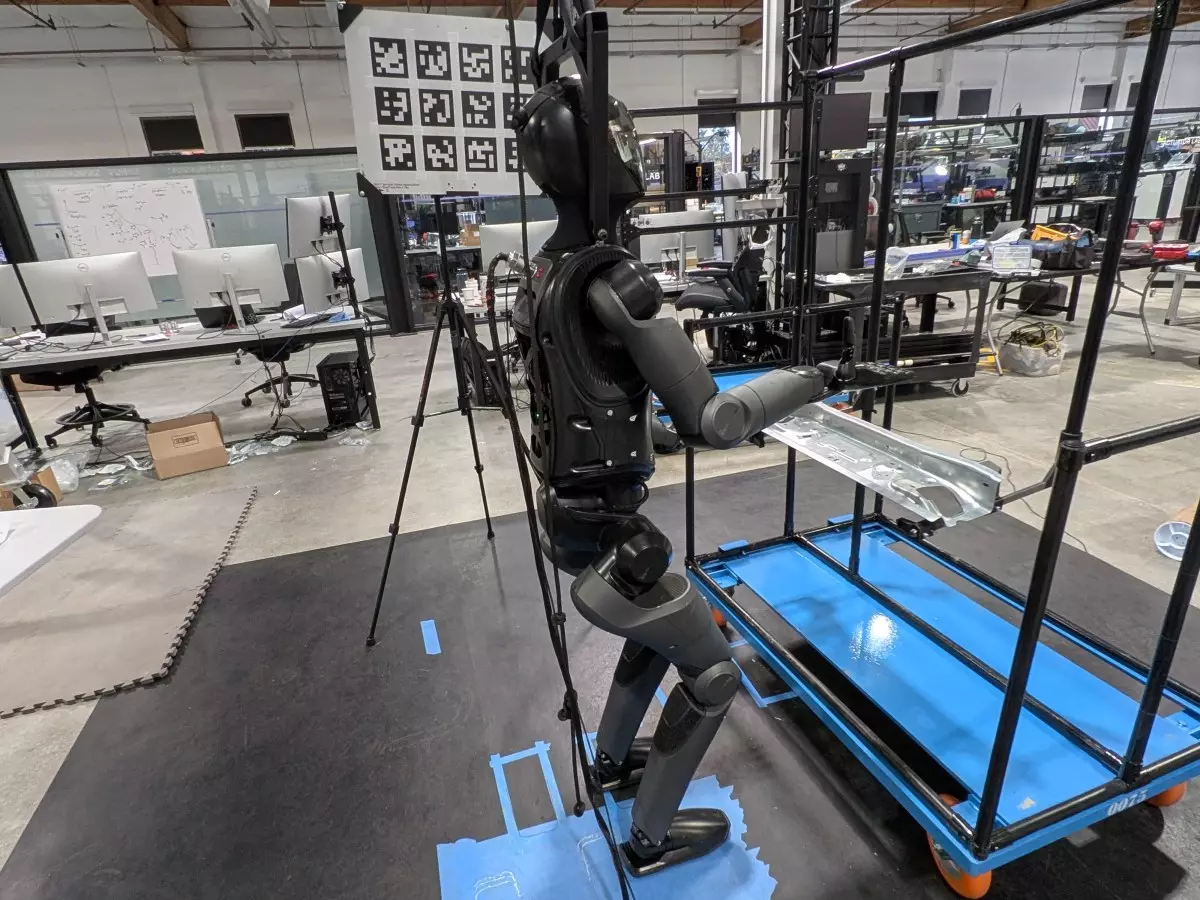The landscape of robotics has rapidly evolved over a short span, especially in the context of humanoid designs aimed at enhancing industrial efficiency and domestic convenience. A recent visit to Figure’s Sunnyvale headquarters unveiled a remarkable transition in the company’s operations and technological advancements over the past 16 months. Under the guidance of CEO Brett Adcock, Figure is not just keeping pace with competitors; it is set on redefining the boundaries of what humanoid robots can achieve.
Upon arriving at Figure’s headquarters, the immediate growth in visibility was evident. Previously a standard office building among its peers in Silicon Valley, its exterior has transformed into a brand emblem, reflecting its burgeoning stature within the tech community. Inside, a palpable sense of dynamism permeates the air, with an employee count that has surged to 130 engineers. This workforce is engaged in pioneering efforts to develop the next generation of humanoid robots, spearheaded by features designed to excel in real-world applications.
What stands out about Figure is its proactive stance on innovation. Adcock has attributed a significant portion of his company’s $1.5 billion funding to prepare for a move into a larger facility not far from their current location. This project is not merely to accommodate growth but to house advanced laboratories aimed at optimizing and testing robotic systems designed for diverse operational environments.
A major focal point of Figure’s research is automotive assembly. The company recently engaged in pioneering pilots with BMW. Observing the robots in action highlighted their integration into high-stakes manufacturing processes, where precision and reliability are paramount. During a two-week stint at BMW’s Spartanburg facility in South Carolina, Figure robots demonstrated their utility by operating nearly non-stop within the assembly line.
These pilots serve a dual purpose: they allow Figure to refine the capabilities of its robots while simultaneously offering an insight into the industry’s readiness to embrace humanoid design. Adcock noted that they are gearing up to reintroduce their robots in January for longer-term deployment, with expectations to initially field a small fleet. This strategy indicates the automotive industry’s openness to adopting humanoid forms that could redefine traditional labor paradigms on factory floors.
While Figure’s current initiatives are geared towards industrial applications, plans for consumer robots are also in the making. Adcock is optimistic about producing a humanoid model priced under $20,000, making it accessible for everyday households, though this realization is still a few years away. The company’s focus is on demonstrating practical uses like assisting in kitchens and managing household chores, that align with evolving user expectations.
However, the transition to consumer markets poses distinct challenges. Critical aspects such as affordability and usability must be thoroughly vetted before entering this vast and diverse market. Figure’s ongoing tests in simulated home environments provide valuable insights but also showcase the shortcomings and hurdles that still exist in producing a commercially viable unit.
During the site visit, the evolution from Figure’s first-generation robot, Figure 01, to the newly designed Figure 02 was starkly visible. The updated model reflects significant technical upgrades, with hidden wires and battery systems that propel smoother aesthetics and functionality. The deployment of Nvidia GPUs and processors within the torso enhances computational capabilities, setting the stage for responsive and reliable mechanical actions.
Despite the sophisticated features, it is essential to recognize that the journey from design to deployment is fraught with challenges. Observing the robots perform tasks aptly raises an interesting dilemma: How many iterations of practice were necessary for these machines to exhibit their newfound skills? The meticulous testing processes—though rigorous—could easily lead to smaller-than-expected advances, especially considering the complexities of autonomous movement.
As Figure prepares for the upcoming return to the BMW plant, the stakes are higher than ever. The work that lies ahead will serve as a cornerstone for the future of humanoid robots in both industrial and consumer sectors. The robotics field stands at the precipice of what could be a revolutionary shift in how we perceive and integrate machines into our daily lives and workflows.
Ultimately, while the progress made at Figure is commendable, it also signifies a more extensive race among tech companies to capture market share and redefine automation. This venture is not just about robots; it represents a reflection of human ingenuity and our relentless pursuit of progress—a journey filled with both promise and potential pitfalls, as society inches closer to a future intertwined with robotics.

